It's strange to write something like 'free plants' as if plants are anything but free!

(Sweet potato from a portion of the potato planted, background right spinach cuttings taking root)
Free Plants
Yesterday I shared (what I did two weeks ago) how I took a bit of my lawn and transformed it into amazing plant homes! Today I want to share with you about how over the past few weeks I've been able to start convincing a diversity of plants to move in, For Free!
Propagation
How do plants make more plants? Well there are several techniques: cutting, layering, bulb and seed are what I have used so far and I'm going to talk about today!
Regrowing What You Eat
This is the simplest method I have employed in my garden so far is to collect seeds and replant scraps from the kitchen. We live in a world of abundance and plant propagation is just one way of plants letting us know this. Also, it just so happens I get to continue to eat and grow what I am already eating!
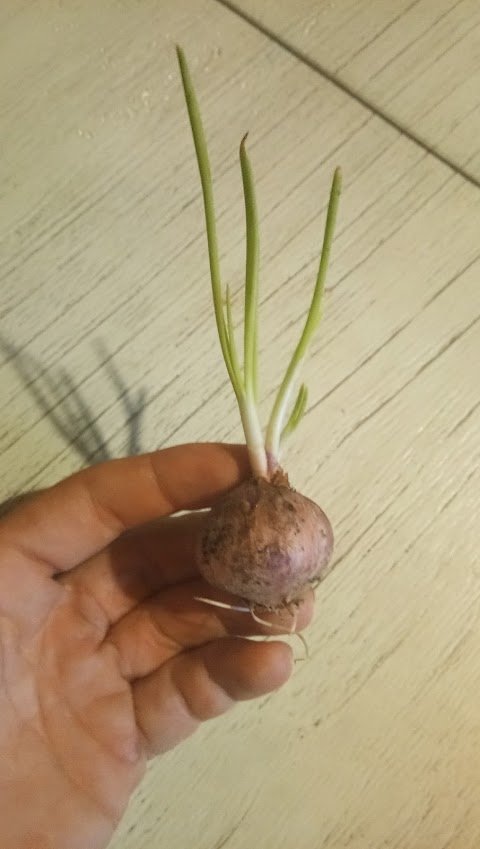
(A clear example of the growing potential of onions, I will remove still about 90% of this to eat, until I get to the seed/bulb)
Seed
I've been collecting the seeds of my fruits (I collect tree fruits seeds for my larger garden, but on the home-scale I stick with just planting non-tree fruits as I don't have much more space for trees :). I collected seed from peppers, capsicums, tomatoes, squash, cucumber and spinach. Once I get the seed I don't sow it directly into the beds just yet. I soak or sprout the seed to prepare it to sow so that I don't have to water it as much for it to sprout.
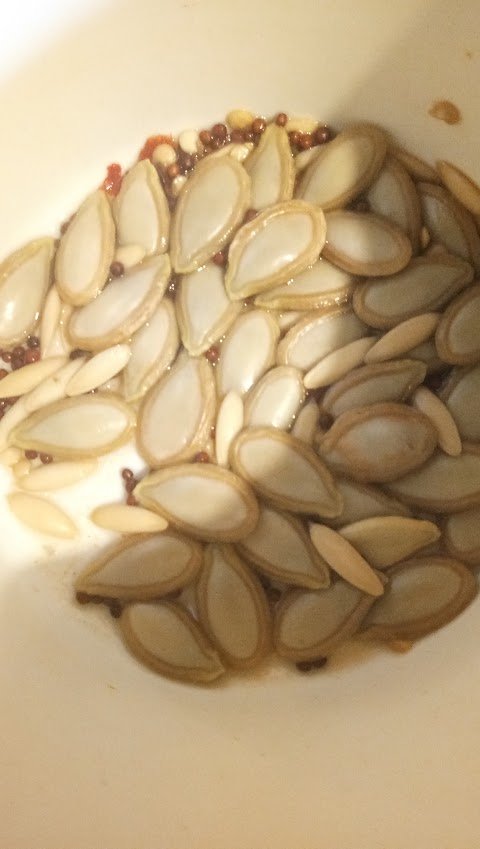
(Soaked seeds of pumpkin, cucumber, tomato, chili and spinach)
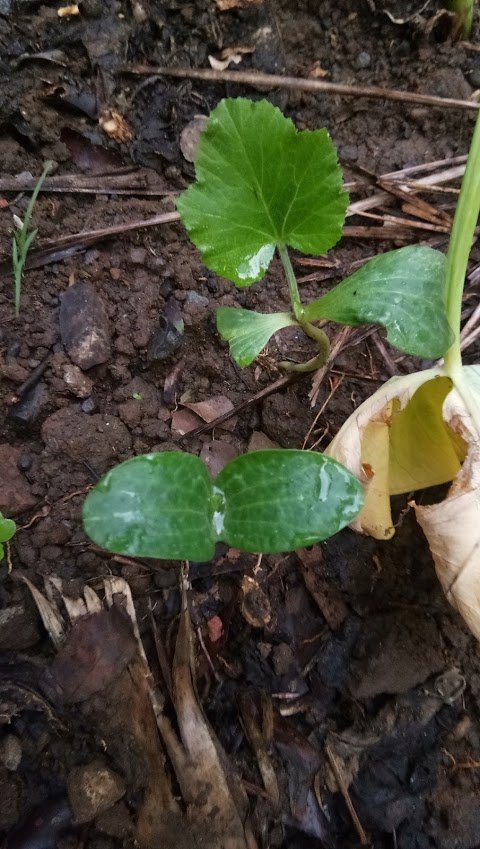
(Squash, amazing growth after about 1.5 weeks from seed!)
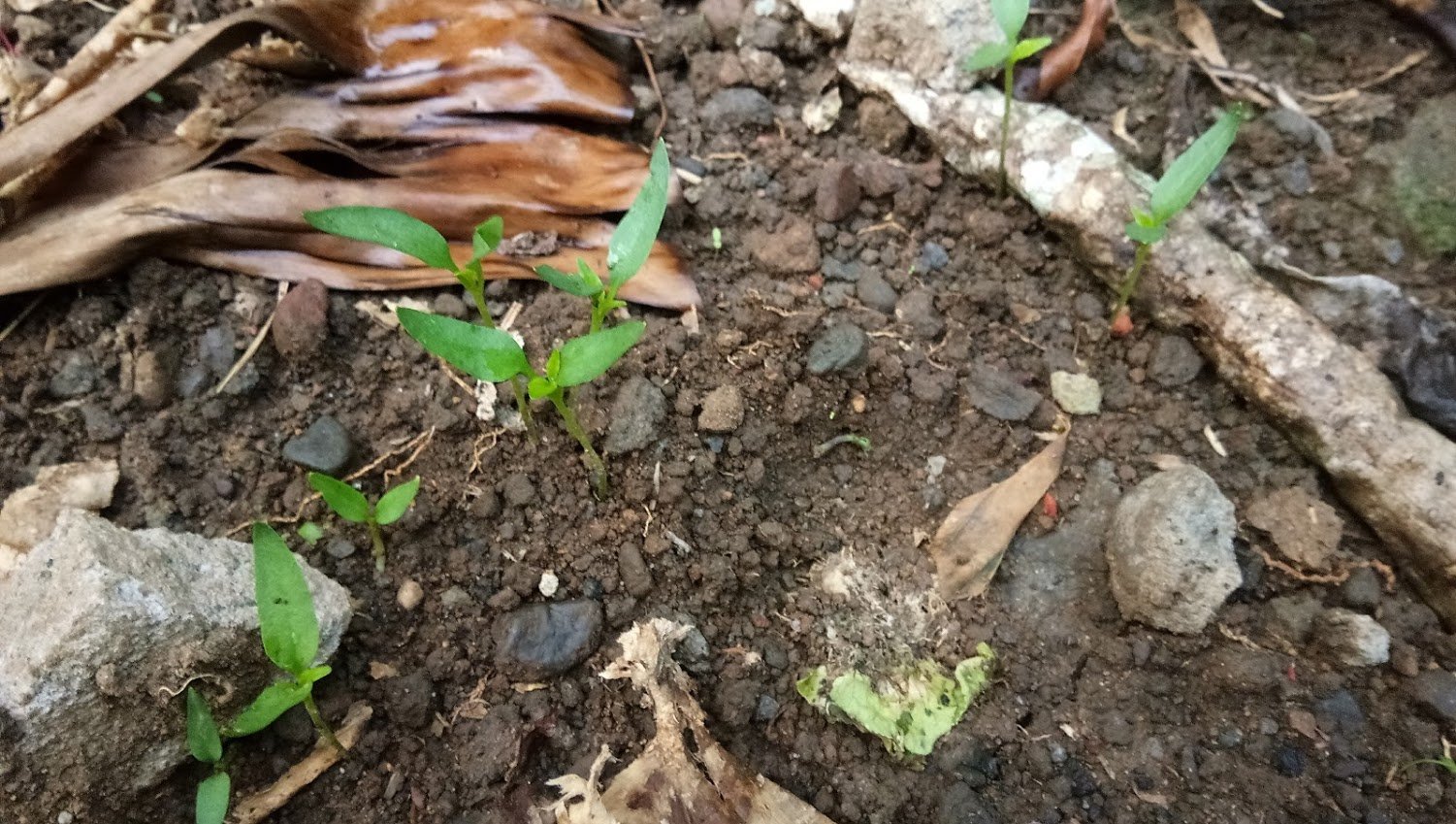
(Chilis and Tomato sprouting up!)
Soaking and Sprouting
It's as simple as it sounds, soak the seeks for 6-8 hours before draining the water. I leave my seeds sitting for about a day with a few rinses of water throughout. I sprout (several days of rinsing them and leaving them in a mason jar) my grains and legumes before I eat them, which makes it really easy to propagate as I toss sprouts around my unproductive areas. Legumes support bacteria that fix nitrogen (pull nitrogen out of the atmosphere and put it into the surrounding soil), so I like to have a variety of legumes scattered around my yard and gardens. More on sprouting in a later post.
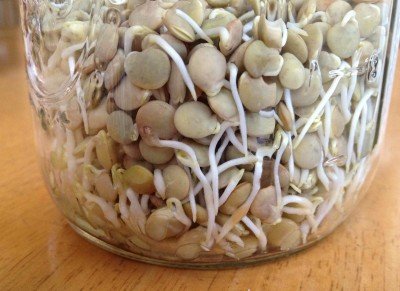
(Lentil sprouts)
Sow
Remember how I said I'm lazy? When I sow I take an assortment of soaked seeds that I have already paired up as good companion plants (plants that mutually benefit each other, more on that in a future post) and just toss them wildly into the area that I would like them to grow. Then I take a rake and gently rake over the very top layer of soil to roughly cover the seeds and that's it. No tedious planting one by one, no "strategic placement" I do it the way nature would have, wildly!
Cutting
This is one of my favorite methods as it's so quick and effective. I've been cutting, stems vines and branches and regrowing them here. If you have a botanical garden, park, forest or any other high-vegetative diverse place, this is where you can get free cuttings :). I was gifted some spinach and moringa cuttings and I collected some holy basil and chayote squash cuttings from another garden. This is simple at minimum you're looking for 3 nodes (but I go for at least 5) on your cutting. Nodes are where branches, vines, roots grow from on the main stem (see pic below). Propagating a cutting is simple. Are you ready? Stick 2 of those nodes underground for roots to develop, and water. Some people prefer to soak the cutting in water until roots form but I have found success in not having to take this step. This also works with many of the vegetables I have planted, namely bok choy, celery and cabbage. We cut the top off as we normally would and just simply stick the base right into the earth. Again, some people prefer to soak in water before planting (this potentially speeds up rooting). But I'm lazy, so I don't bother :)
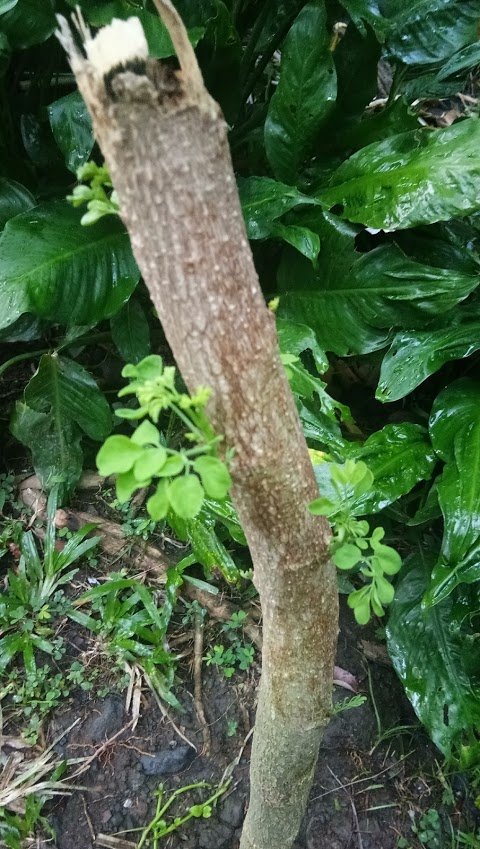
(One of my moringa tree cuttings taking root)
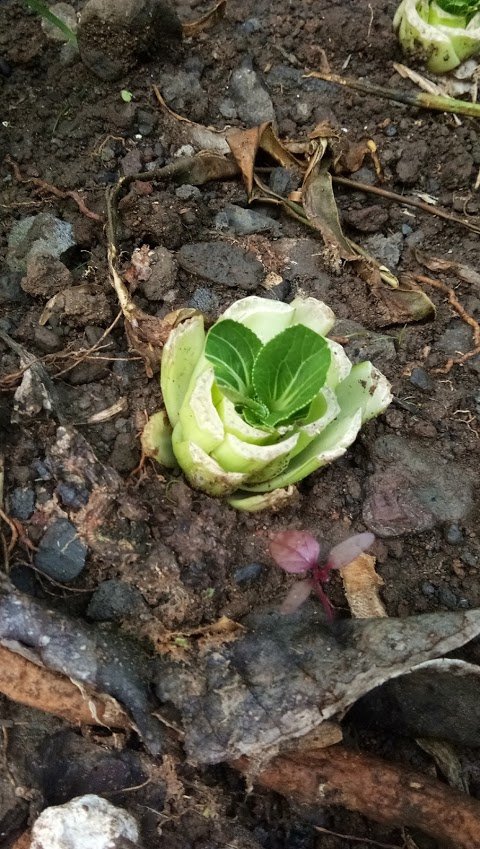
(Bok Choy regrowth)
Layering
This one just involves splitting a root section of the plant. I took a section of lemon-grass and sweet-onion from friends and put it right into the garden. It will continue to root out and expand where I will be able to continue to propagate it around my property.

(Sweet onion spreading wildly)
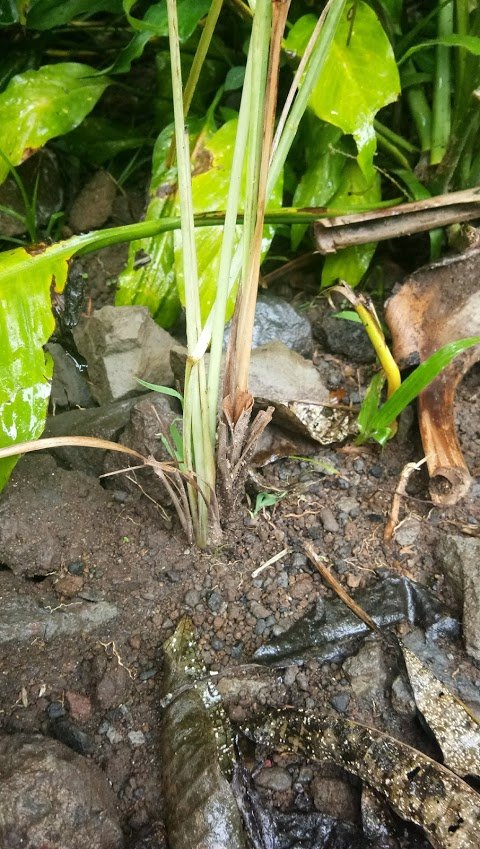
(lemongrass making a new home)
Bulb
This one is great! The plants just rocket up out of the ground when propagated this way. I take the cores from my onions (cutting away the layers to get the center pieces that have no layer, these are bulbs and new onions will grow from them). and a clove or two of garlic per head and replant them. In the future this will be a sure sustainable replacement strategy (eat 90% reinvest 10% for the future).

(Garlic regrowth)

(Onion regrowth)
Abundance
- For every garlic I buy I can replant 10+ or eat 9+ and replant 1.
- For every onion I eat I serve up 80% saving the core (bulbs) and grow 1-3 more!
- For every bok choy, celery or cabbage I get I cut off the top and replant the bottom!
- For every sweet potato I buy, I cut chunks around the nodes to replant (again eating 80% to replant 2 per potato).
- For all the tomatoes, chili, peppers, squash, cucumber and zucchini I buy I replant the seeds in place.
#Free Is Not Just Economically Superior
When plants take root in the environment in which they will grow, they are much more adapted to the specific environmental conditions. Plants grown from seed in place are more robust than plants grown in a nursery on your own property (which is far superior than buying plants from another environments nursery). When I let my plants root where they will stay, I find them to be far healthier and vigorous than the plants I buy or root elsewhere.
Why Free? The Return of Sound Logic
4 years ago I used to live in Oakland California and had a little plot of dirt in my backyard called a "garden". Back then I knew nothing about permaculture or gardening techniques and spent over $350 (buying compost, plants, raised beds, etc) at a local nursery to get a wildly unsuccessful plot of dirt in return. Now, with these simple hacks I spent no more money than I would normally have and am well on my way to a diverse garden! I will be visiting more diverse areas and borrowing some of their abundance to increase my diversity in the future and share with you more in depth on propagation techniques :) Until next time, let's continue to grow abundance!
###In case you missed them:
Hack 1: From Grass to Mass-terpiece
Rieki

